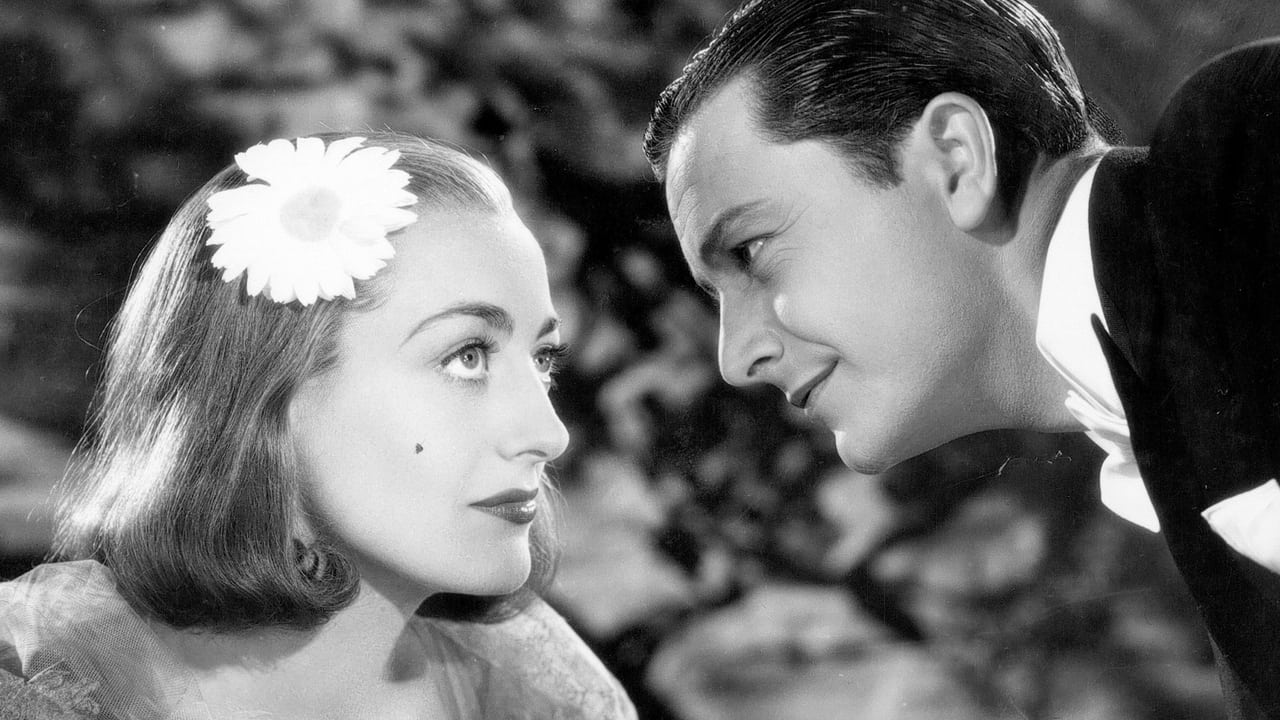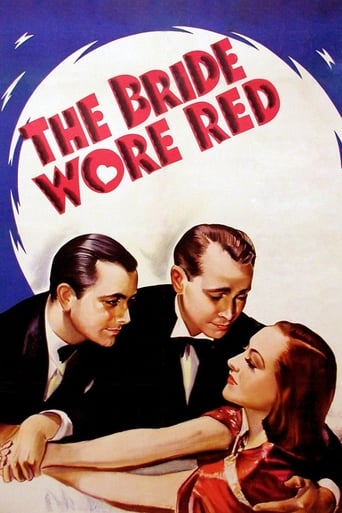



Really Surprised!
To all those who have watched it: I hope you enjoyed it as much as I do.
View MoreThe movie's not perfect, but it sticks the landing of its message. It was engaging - thrilling at times - and I personally thought it was a great time.
View MoreOne of the worst ways to make a cult movie is to set out to make a cult movie.
View MoreThe Bride Wore Red is a ridiculous but fun film. A drunken count, slumming it for the night, runs into a cynical and hungry young woman, Anni Pavlovitch (Joan Crawford). He decides to send her on a luxury vacation to prove his drunken point that the poor and the rich aren't so different after all and buys her new clothes and arranges for her to stay in a luxury resort. Anni, who obviously thinks the whole thing is crazy, decides to go threw with it anyway. Arriving in the alps she meets Giulio (Crawford's real life husband, Franchot Tone) a very pert mail employee who immediately takes a shine to her. The two have sparks aplenty, but when she arrives at the hotel Anni quickly realizes that she would rather always have food on her table than the love of a good man, and quickly sets about seducing Rudi, a flighty engaged man who is very taken with her. As with most romcoms the real test is if the chemistry works and here it does perfectly. Crawford and Tone have excellent chemistry here and he is very sweet and naive, persistently wearing down the jaded and bitter singer. It's a lovely sweet film.
View MoreYears ago, I had the pleasure of seeing this on the big screen at the Museum of Art in Los Angeles in a double-bill with "Jezebel". No, it wasn't a "Joan vs. Bette" festival, but a "the lady wore red" series, and in the case of these two films, the red was not captured because of black and white photography. While "Jezebel" is of course an all-time classic, "The Bride Wore Red" was considered at the time a box office disappointment in a period of Joan Crawford's career where repeat themes of films she'd already done lead her to be named on the list of "box office poison".To see "The Bride Wore Red" today is to show what MGM stood for in its heyday: beautiful stars, glamorous clothes and exotic settings. In "The Bride Wore Red", she's a cabaret singer down on her luck who is given the good fortune by one of her customers (George Zucco) who, like Henry Higgins, thinks he can turn this sow's ear into a silk purse. Before you know it, she's heading to an exclusive hideaway for the wealthy in the Alps, and has gotten the attention of wealthy Robert Young, as well as local postman Franchot Tone. Young is already engaged to Lynne Carver, however, but Crawford is determined to bust that up. All seems to be going well until she puts on the garish red dress she's been saving up for the right occasion, something which shows her for who she really is.Red, in high society, was apparently not a proper color for a nice young lady to wear, and indeed, the dress designed for Crawford is truly audacious and tacky. Everything else she wears, however, present her as more lady-like and of noble blood than she really is. Young's companions, Billie Burke (as a snooty contessa) and Reginald Owen (as Carver's father), can tell something's off with this seemingly "perfect" miss, and at a local social event (with practically every man in liederhosen), Crawford shows the truth of who she really is, down to earth and not at all uppity like the class she's trying to worm her way into. Glamorous with a capital "G", "The Bride Wore Red" is one of the most entertaining of Joan's MGM films, even if at times, it is a bit like the top of an overly stuffed wedding cake. Director Dorothy Arzner went out of her way to make this as beautiful as possible, and for some audiences (particularly the critics) it must have been a little too much, having been overstuffed with recently released glossy MGM films like "Maytime" and "Rosalie" where at least the lovers got to sing rather than argue before the love scene arrived.
View MoreIf you are a big fan of classic Hollywood films, then the chances are you've seen several Joan Crawford films like THE BRIDE WORE RED. MGM type-cast many of its stars during this period--Greta Garbo was the super-vamp, Jean Harlow the slut who used her body to sleep her way to the top, Myrna Loy was sweet and a bit kooky and Joan Crawford was a poor girl who THINKS happiness will be found by marrying a rich man. Of course, these stars did other films, but most of their films during the 30s were true to these images. As a result, while this Joan Crawford film is very good and very well made, it was totally formulaic--so much so that an astute viewer will not be the least bit surprised where it all ends.Given that you can get past this, the movie is very good--sort of like an odd variation of the Cinderella story. An eccentric rich man (George Zucco), on a lark, decides to dress up cheap lounge singer Crawford and send her to the smartest hotel in order to fool his friends into thinking she's a rich society woman. Once there, Crawford fits in rather well and rich Robert Young is smitten. While she does not seem to love him, Crawford sees marrying Young as a way to leave her life of poverty--since Zucco will only pay for her to pretend to be rich for a short period of time. The problem is that Franchot Tone plays a sweet but poor guy she meets at the hotel and Joan finds herself falling for him but also wanting to marry Young for his money. How all this is resolved is pretty predictable but there is a certain beauty and glossiness to the production that help it still be quite watchable.By the way, I was quite surprised to see Billie Burke play against type. Instead of being rich, kooky and sweet, she's a bit of a viper! Now that's interesting, huh?Oh, and in real life, Tone and Crawford were husband and wife...briefly.
View MoreDespite the provocative title and the first few scenes, which suggest this might be an interesting variation on Shaw's "Pygmalion," we're actually back in Joan Crawford's MGM universe, where one suitor isn't enough if you can have two, and where Adrian can be counted on to provide a drop dead gown at regular intervals.This airless, relentlessly phony picture did Crawford no favors. For a major star she is remarkably inexpressive. Her face, so strong, angular and meticulously made up, is striking enough to get all our attention, but this curiosity is never repaid. We search Joan's face looking for fleeting expressions, varying moods, complex emotions but we get only a single mask of anxiety. Crawford in this period seems incapable of shaping a performance or giving a character flesh, blood and heart -- she just sleepwalks from scene to scene looking as perfect and lifeless as a mannequin (coincidentally the title of her next film).If glamor without rhyme, reason or variation is your idea of entertainment, you are welcome to it, but I thought THE BRIDE WORE RED was both strange and boring. By the way, the eponymous dress is kind of tacky but undeniably spectacular, and it sure looks red, even in black and white.
View More